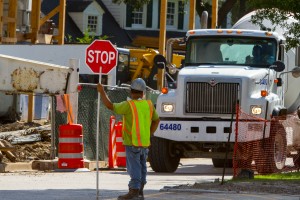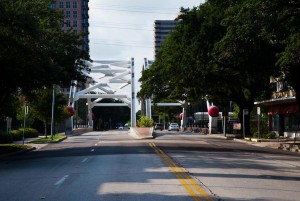City Council Approves Long-Awaited Montrose TIRZ
 Yesterday the Houston City Council voted unanimously to create a Tax Increment Reinvestment Zone (TIRZ) for the Montrose area. A TIRZ is a development financing tool created under Chapter 311 of the Texas Tax Code to give specially designated neighborhoods greater control over the use of their property taxes. Beginning the year a TIRZ is established, all future increases in the district’s property tax revenue goes not to the city but to fund specific infrastructure repairs and improvements within the district, such as new sidewalks, streets, parks, and other enhancements intended to stimulate economic development.
Yesterday the Houston City Council voted unanimously to create a Tax Increment Reinvestment Zone (TIRZ) for the Montrose area. A TIRZ is a development financing tool created under Chapter 311 of the Texas Tax Code to give specially designated neighborhoods greater control over the use of their property taxes. Beginning the year a TIRZ is established, all future increases in the district’s property tax revenue goes not to the city but to fund specific infrastructure repairs and improvements within the district, such as new sidewalks, streets, parks, and other enhancements intended to stimulate economic development.
“Basically, the TIRZ means that future tax revenue actually gets reinvested back into the same neighborhood,” said Montrose businessman and Chairman of the Montrose District board of directors Claude Wynn. “The neighborhood gets control of its own taxes—the money’s not going to other parts of the city.” The City Council will appoint an all-volunteer board of between five and fifteen directors to oversee the district.
The Montrose TIRZ will be bounded by Highway 59 to the south, West Dallas to the north, South Shepherd to the west, and Taft, Bagby, and Spur 527 to the east. It will become Houston’s 27th TIRZ, joining neighboring districts such as the Upper Kirby TIRZ, the Midtown TIRZ, and the Memorial Heights TIRZ. “If these TIRZs weren’t in existence, half the CIP [Capital Improvement Plan] would disappear,” said Mayor Annise Parker at a press conference following the council meeting yesterday. “So it’s a way to do capital projects, much-needed capital projects.”

As in many other Houston neighborhoods, the Montrose TIRZ is expected to work closely with the local management district to study infrastructure needs and implement solutions. “If you look around the city, the areas of town that have used TIRZ structures the most successfully have almost all been paired with management districts,” said Wynn. “Pairing a management district with a TIRZ is a very, very effective planning and execution tool, because a lot of the management district’s front-end work and advocacy for smart planning gets translated to the TIRZ for their consideration.”
Management districts, which are funded by a business property tax, deliver services like private security patrols, graffiti and litter abatement, and aesthetic improvements. A TIRZ, however, can go further by funding major infrastructure projects that are beyond a management district’s budget. According to the project plan approved by the City Council, the top priorities of the Montrose TIRZ will be to repair and rebuild the neighborhood’s crumbling streets and sidewalks, improve parking, and develop and maintain open spaces and parks.
Those changes can’t come soon enough for Wynn, who said that many of the streets in his neighborhood are becoming downright unsafe. “Nobody can argue with the fact that all of the thoroughfares in Montrose need significant work, either major repairs or, more than likely, rebuilding,” he said. “Richmond was never considered to be a major thoroughfare during its layout 50 or 60 years ago. There are some portions of lower Westheimer where the geometry is awkward and actually dangerous.”
Thanks to the TIRZ, Montrose will no longer have to wait for the city to get around to fixing those problems. Instead, for the first time, it will take control of its own destiny. “From the management district’s point of view, this is one of the things we’ve been trying to achieve,” Wynn said. “Our philosophy is that we can plan our neighborhood better than the city can. Montrose can determine what’s best for itself.”
